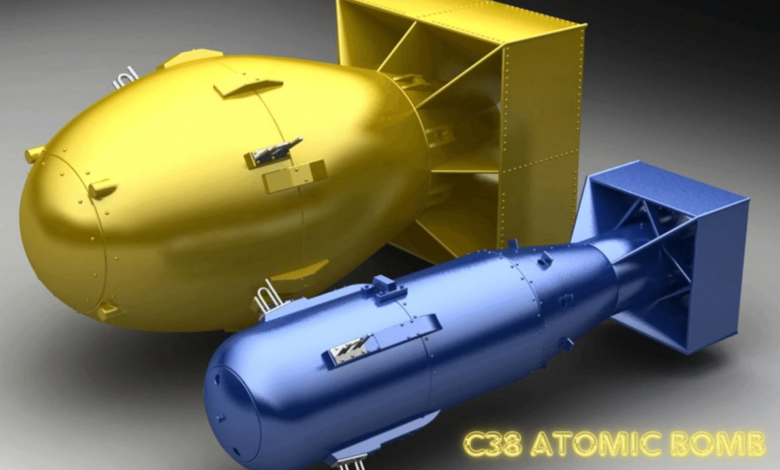C38 Atomic Bomb: Unveiling the Mysteries and History

The term “C38 atomic bomb” might not be as universally recognized as other names associated with nuclear weapons. Still, it carries significant weight in the annals of military history and atomic research. This comprehensive article delves into the history, development, implications, and technical aspects of the C38 nuclear bomb. By understanding its context and the technological advancements it represents, we can better grasp its impact on global security and scientific progress.
The Historical Context
The Dawn of the Atomic Age
The development of atomic bombs marked a turning point in human history. The first nuclear bombs, developed during the Manhattan Project in the United States during World War II, demonstrated the devastating power of atomic fission. The 1945 bombings of Nagasaki and Hiroshima were harbingers of a new era of warfare and geopolitical strategy.
Emergence of the C38 Atomic Bomb
The term “C38 atomic bomb” often refers to a specific model or series within a nation’s nuclear arsenal. To understand its significance, we must consider the broader history of atomic weapons development during the Cold War. The Cold War era saw an arms race between the United States and the Soviet Union, leading to the creation of various atomic bomb designs, each with unique specifications and intended uses.
Technical Aspects of the C38 Atomic Bomb
Design and Mechanism
Like its predecessors, the C38 atomic bomb operates on the principle of nuclear fusion. Fission happens when an atom’s nucleus splits, breaking down into tiny pieces and releasing a tremendous quantity of energy. This energy is harnessed to create an explosion of unparalleled magnitude.
Key Components
- Fissile Material: The core of the C38 atomic bomb comprises fissile materials such as uranium-235 or plutonium-239. These materials are capable of sustaining a chain reaction.
- Neutron Reflector: Surrounding the fissile core, the neutron reflector ensures that neutrons produced during fission are directed back into the core, promoting a sustained chain reaction.
- Explosive Lens: Conventional explosives arranged in a specific pattern compress the fissile material to achieve the supercritical mass necessary for a nuclear explosion.
- Detonators: Sophisticated detonation mechanisms ensure the precise timing required to initiate the fission reaction.
Yield and Efficiency
The yield of the C38 atomic bomb, measured in kilotons or megatons of TNT, indicates the weapon’s explosive power. Technological developments have improved the effectiveness of nuclear bombs, allowing for smaller, more powerful devices. The C38 atomic bomb exemplifies these advancements through innovations in design and materials.
Strategic Implications
Cold War Dynamics
During the Cold War, the proliferation of atomic bombs like the C38 was a crucial element of the strategy of deterrence. Both superpowers amassed significant arsenals to deter each other from initiating a nuclear conflict. The concept of mutually assured destruction (MAD) dictated that any use of atomic weapons would destroy both the attacker and the defender.
Modern Nuclear Policy
In the contemporary world, the legacy of the C38 atomic bomb influences nuclear policy and international relations. Agreements like the Non-Proliferation of Nuclear Weapons Treaty (NPT) aim to prevent the spread of atomic weapons and promote disarmament. However, the modernization of nuclear arsenals continues, reflecting ongoing tensions and the importance of maintaining a credible deterrent.
Environmental and Human Impact
Immediate Effects
The detonation of an atomic bomb resulted in immediate, catastrophic destruction. The intense heat, blast waves, and radiation can obliterate infrastructure and cause massive loss of life. The cities of Hiroshima and Nagasaki provide sobering reminders of the human toll of nuclear warfare.
Long-term Consequences
Beyond the initial devastation, nuclear explosions have long-term environmental and health effects. Radioactive fallout contaminates the environment, leading to chronic diseases like cancer and genetic alterations in affected populations. The ecological impact can persist for decades, rendering large areas uninhabitable.
Ethical and Moral Considerations
The Debate Over Nuclear Weapons
The existence of atomic bombs like the C38 raises profound ethical and moral questions. The potential for unparalleled destruction challenges the justification for maintaining and developing such weapons. Advocates for disarmament argue that the risks outweigh any strategic benefits, while proponents of deterrence emphasize nuclear weapons’ function in preserving peace through fear of retaliation.
Humanitarian Initiatives
Various international initiatives and organizations advocate for disarmament and non-proliferation in response to the ethical dilemmas posed by nuclear weapons. The Abolition of Nuclear Weapons International Campaign (ICAN), which received the 2017 Nobel Peace Prize, Is one such organization working towards a world free of nuclear weapons.
Conclusion
While not as widely recognized as other models, the C38 atomic bomb represents a critical chapter in the history of nuclear weapons. Its development, technological intricacies, and strategic implications offer valuable insights into the broader narrative of atomic research and military strategy. As we continue to navigate the complexities of nuclear policy, understanding the legacy of weapons like the C38 is essential for shaping a safer, more secure world.
You May Also Read: Fashion 6 Cell 10.8V 4001mAh-5000mAh Replacement Laptop Battery for ASUS




